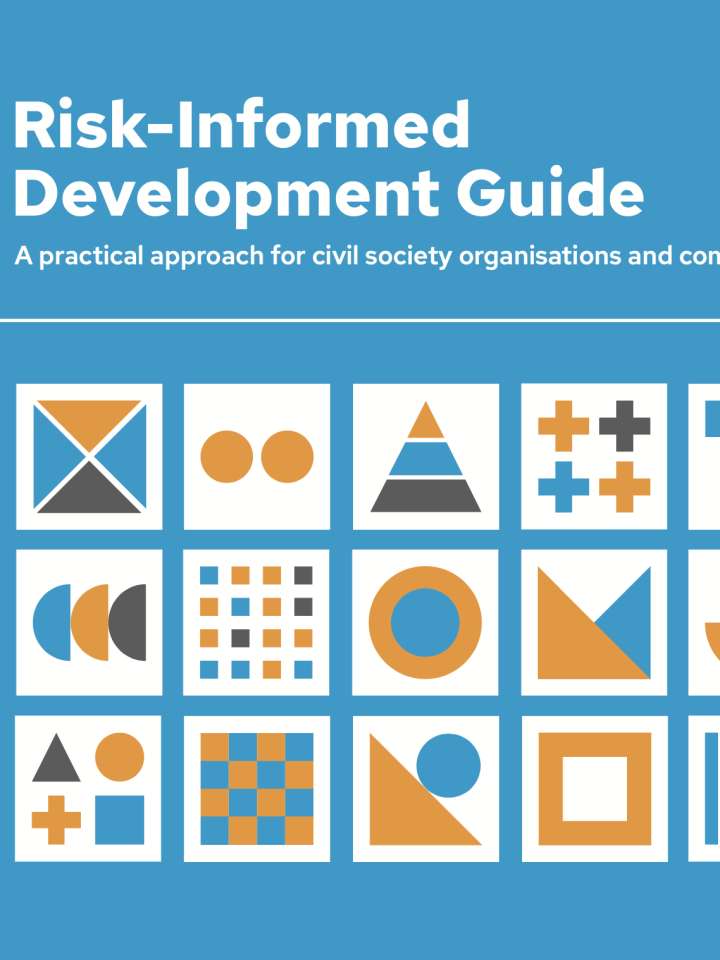Risk-informed development guide
The guide highlights key approaches to strengthen risk-informed development and recommends nine stages to deliver risk-informed development planning. It aims for risk-informed development that is localised, community-led and participatory. The guide highlights ways in which risks created by hazards and risk drivers (e.g. climate change, urbanisation, food and water insecurity, forced displacement, gender inequality and conflict) can be mitigated. It is intended to introduce or strengthen the capacities of communities most at risk on the use of risk information and encourage greater participation by those most at risk in development processes. Each of the nine stages recommend ways to integrate aspects of risk information into a community-led development planning framework.
This guide suggests ways to:
- Gather, integrate and use information around risks (specifically related to hazards and risk drivers)
- Read and analyse multiple factors and their impacts on places, people and systems (both physical and social)
- Prepare for anticipated risks in the future and build resilience by harnessing environmental, social and economic potential
A central approach and guiding principles for carrying out risk-informed development planning is provided. Objectives, key steps, as well as relevant tools are given at each stage.
Explore further
